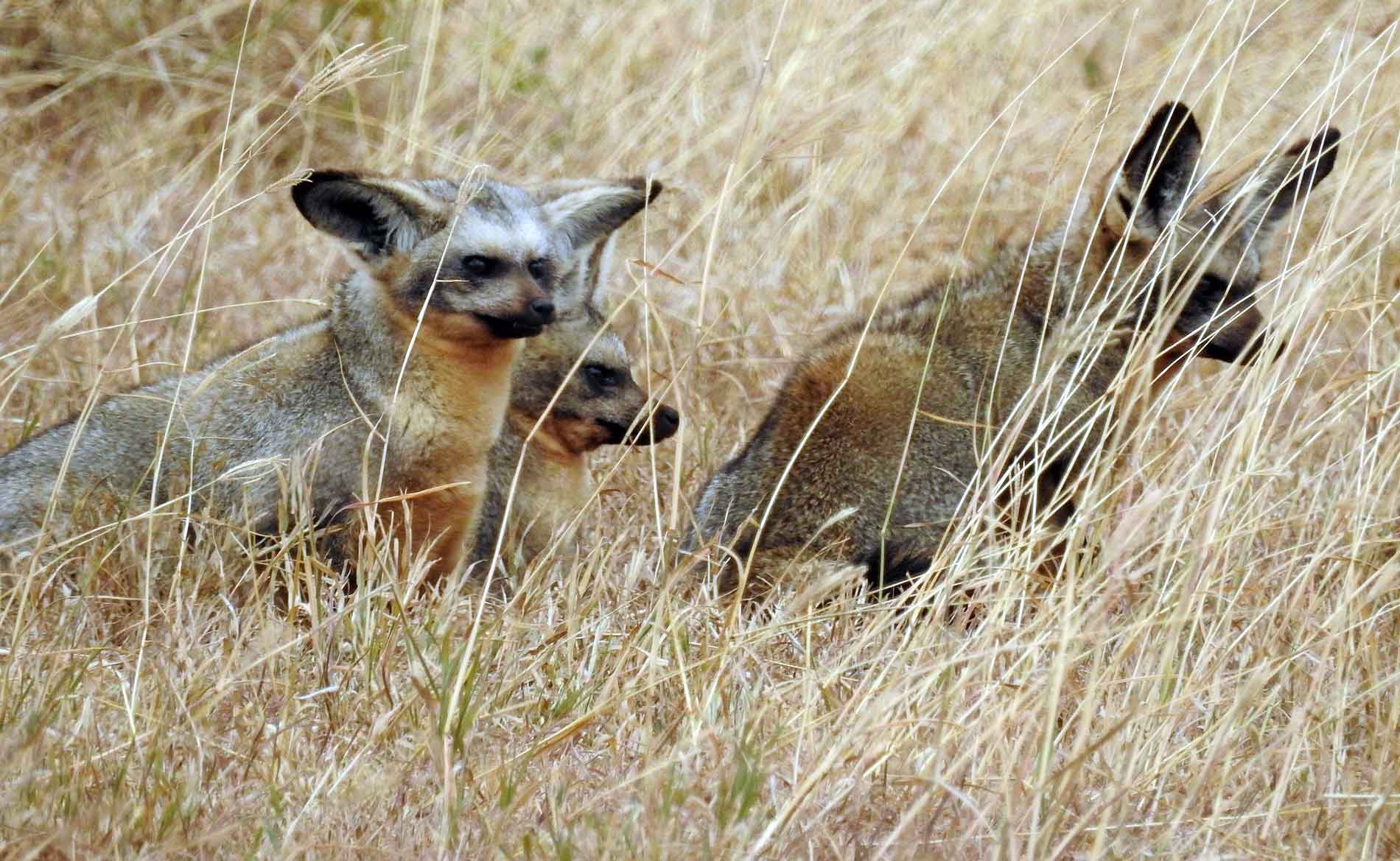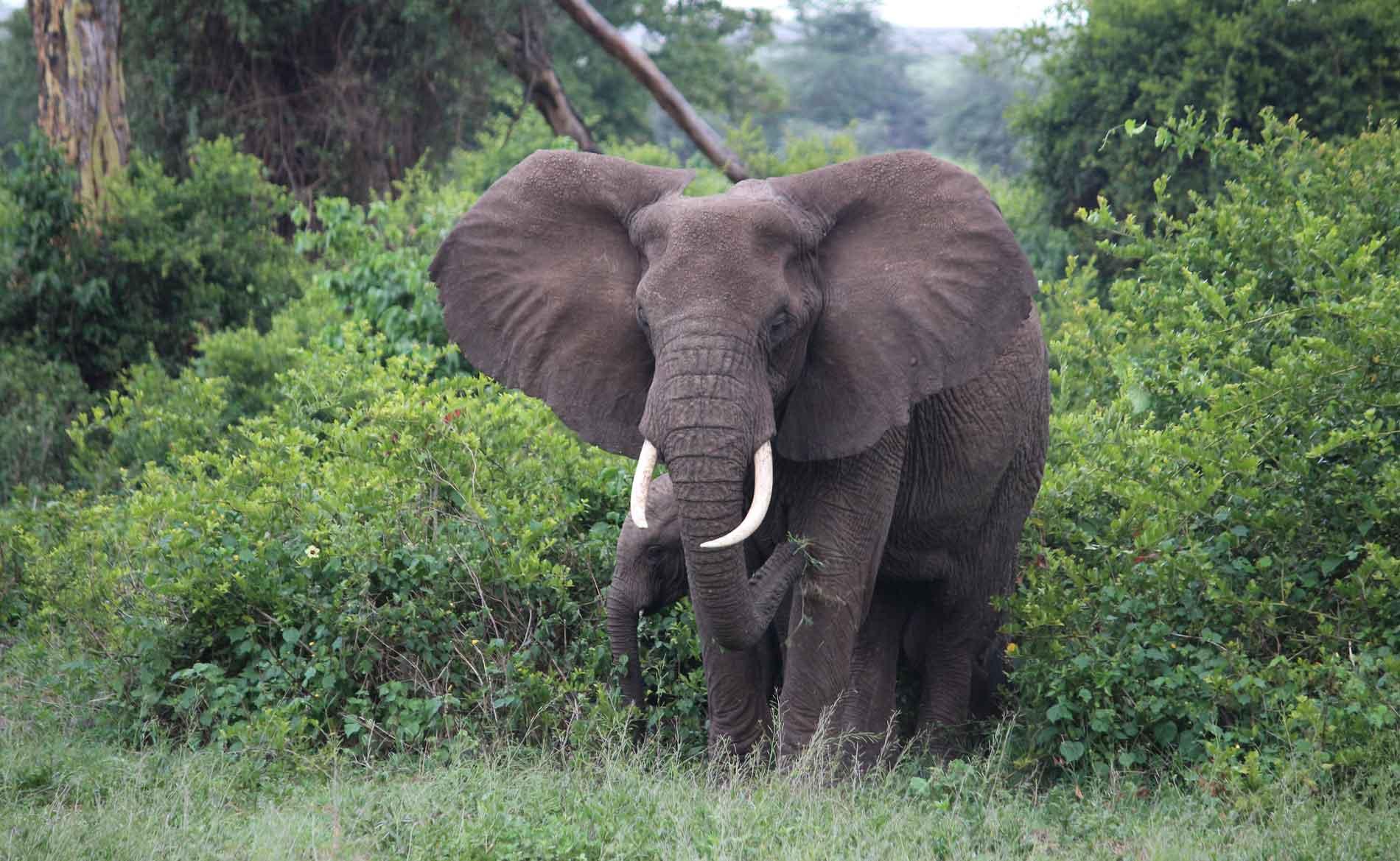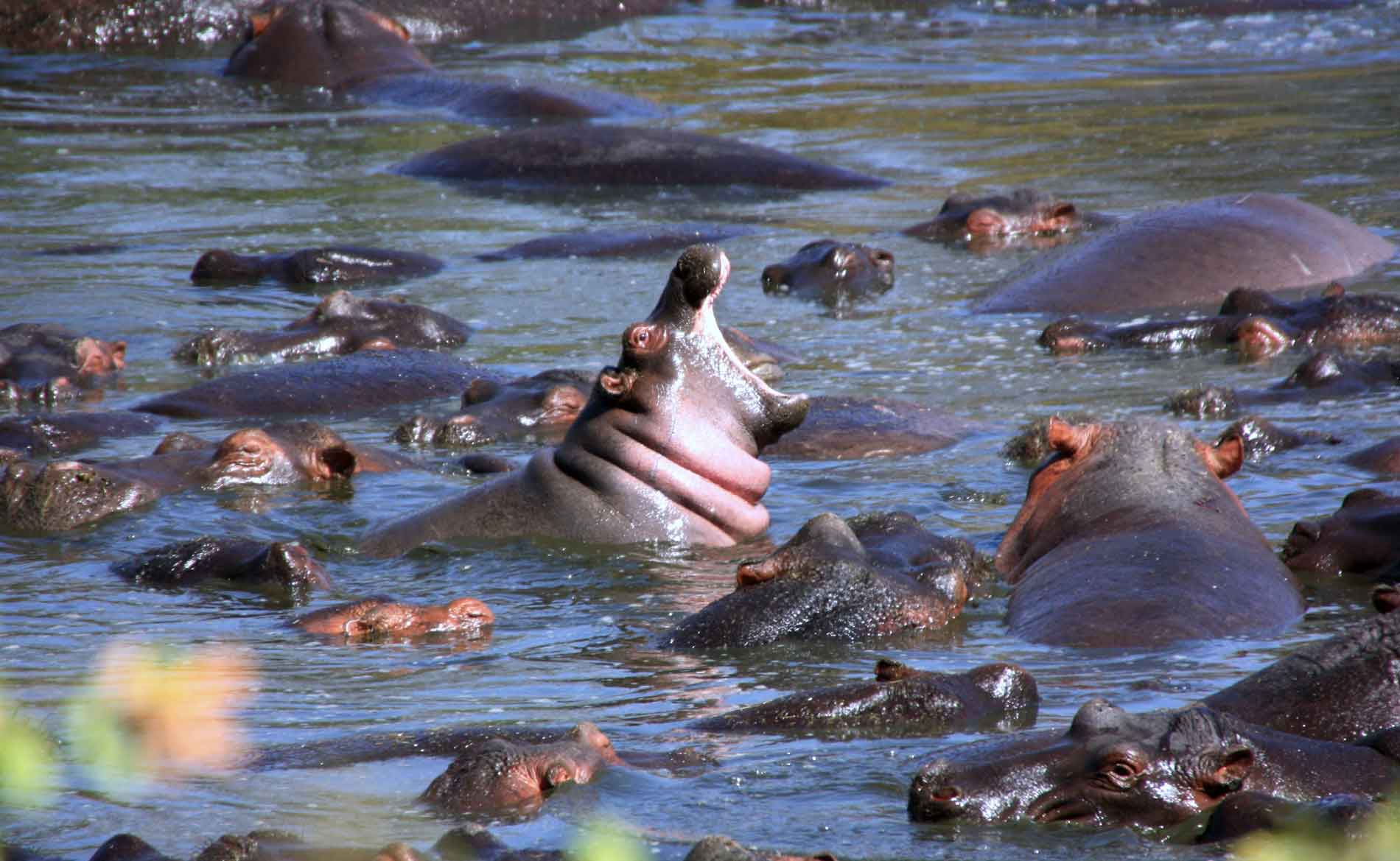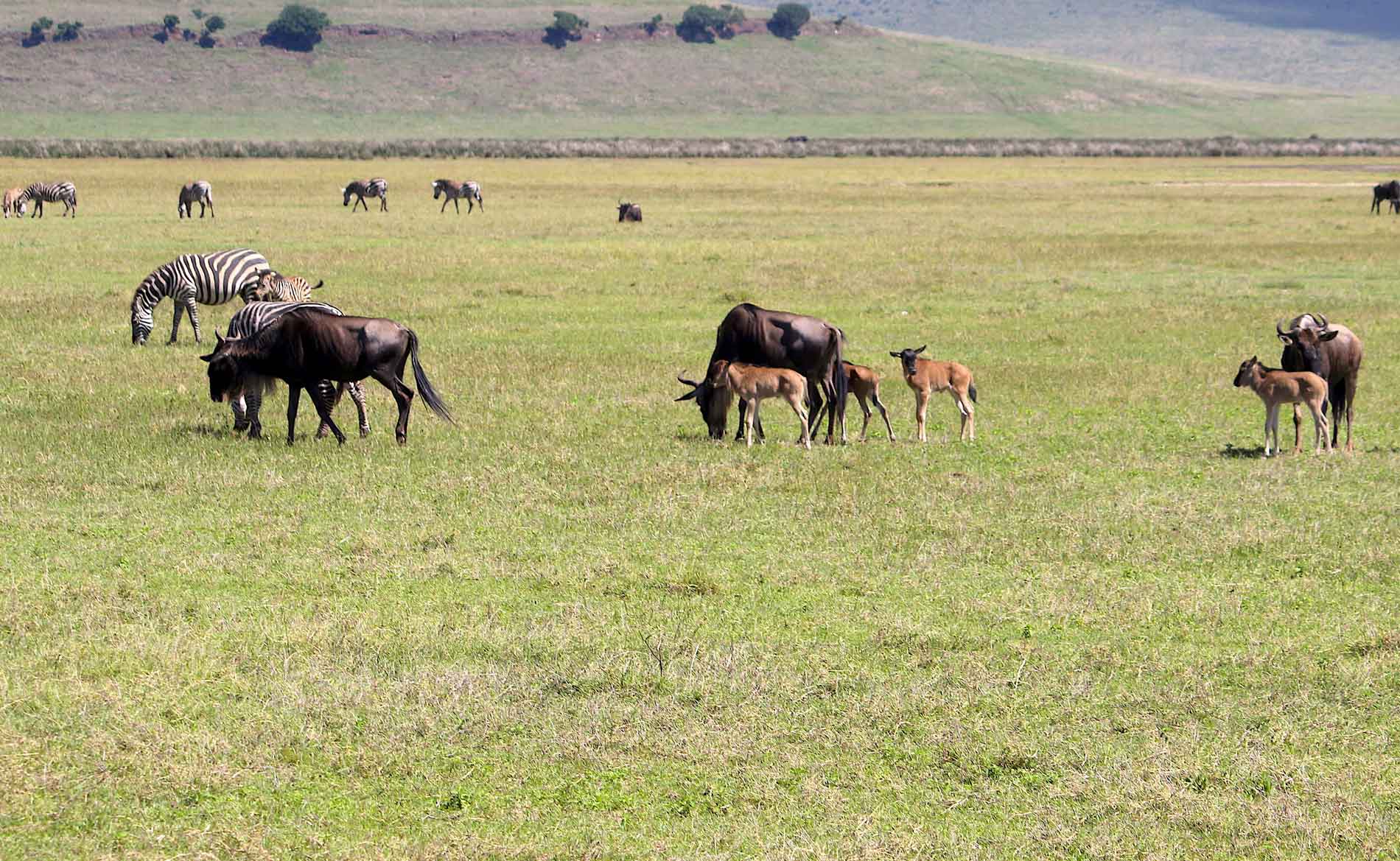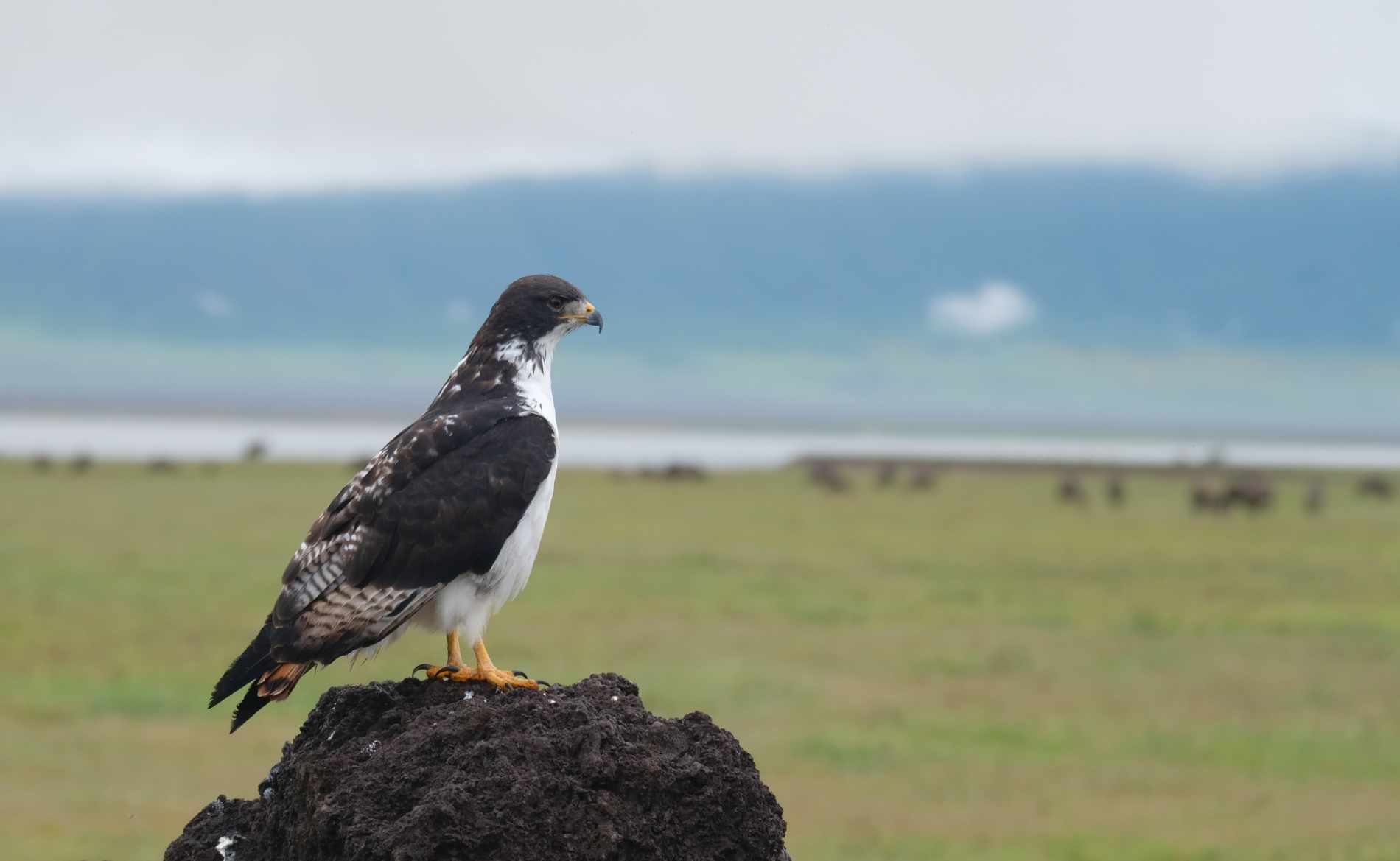Ngorongoro Crater and Conservation Area: Africa’s highest density of predators and the cradle of mankind combined
Facts Ngorongoro Crater:
- Founded in 1959 (part of Serengeti National Park since 1951)
- UNESCO World Heritage Site since 1979
- The only nature reserve in Tanzania where wild animals and people live together in harmony
- Home to the famous Ngorongoro Crater, the largest intact volcanic caldera in the world
- There are a small number of selected accommodations in the Ngorongoro Conservation Area and a wide range of hotels and lodges in nearby Karatu
- Also known as the Cradle of Humankind due to the discovery of traces of Homo habilis and Hominidae in the Olduvai Gorge
- Size of Ngorongoro Conservation Area almost 8,300 km2 = about half the size of Thuringia
- Size of Ngorongoro Crater 260 km2 = less than half the size of Cologne
Best time to visit:
- The Ngorongoro Conservation Area and the crater of the same name can be visited all year round
- Due to the altitude of up to over 2,400 meters, it can always rain in the evergreen forests of Ngorongoro
- In the rainy season from March to May and in November, the roads can be a little slippery, but the crater is lush green until around July
- January to April is the best time to marvel at wildebeest and zebra offspring
Getting there from Arusha:
- 190 km = a good four hours by safari car
Highlights Ngorongoro Crater:
- See Maasai cows grazing alongside wildebeest and zebras
- Experience the exhilarating drive down into the unique Ngorongoro Crater
- Watch a pride of lions on patrol through the crater
- Marvel at one of Tanzania’s few black rhinos
Part of the Serengeti National Park since 1951, the Ngorongoro Conservation Area was established as an independent nature reserve in 1959. Ngorongoro is unique for several reasons:
- It is home to the eponymous Ngorongoro Crater, the world’s largest intact collapsed volcano, also known as a caldera.
- Ngorongoro is the only area in Tanzania where wild animals are protected and at the same time human settlement is permitted. A limited number of Maasai shepherds live in the protected area with their herds of cattle.
- The Olduvai Gorge, located in the Ngorongoro Conservation Area, is where the earliest human species Homo habilis, Homo erectus and Homo sapiens were found, which is why it is also regarded as the cradle of mankind.
- Apart from the Serengeti, the Ngorongoro Crater is the only area in northern Tanzania where you can still see black rhinos.
For this reason, the Ngorongoro Conservation Area was declared a UNESCO World Heritage Site in 1979.
The entire area covers around 8,300 square kilometers, of which only around 3.2 percent is accounted for by the Ngorongoro Crater. As you drive through the area, you have the extraordinary opportunity to see zebras or wildebeests grazing alongside Maasai cows and goats. The pastoralists in Ngorongoro live in harmony with the wild animals and move around with their herds of cattle in search of water and food just like the wild animals. The Ngorongoro Conservation Area is part of the Serengeti ecosystem and borders directly on the southern part of the Serengeti National Park in the northwest. During the year, parts of the huge herds of wildebeest, zebra and gazelles, which constantly move around the ecosystem and are also known as the “Great Migration”, can therefore be found in the Ngorongoro Crater. Due to the abundance of water and food, numerous grazers have naturally settled permanently in the crater. They in turn provide a reliable source of food for predators, which is why the Ngorongoro Crater has the highest density of predators in the whole of Africa. These mainly include lions, jackals and hyenas, but cheetahs and leopards also live in Ngorongoro, although the latter are seldom seen. But that’s not all – the crater is also home to various bird species, including ostriches, buzzards, cranes, eagles, secretary birds and flamingos. To complete the Big Five, elephants, buffaloes and – that’s right – rhinos are still missing. The large pachyderms and the stocky relatives of the cattle we know are plentiful enough that you are relatively certain to see them. There are only very, very few black rhinos left in the world. They were almost wiped out within a few decades of consistent poaching. In northern Tanzania, they can now only be found in the Serengeti National Park and in the Ngorongoro Crater. The exact population is not published, but a maximum of 50 specimens can be assumed. Accordingly, it is unique to see such a black rhino. The proud horn bearers, which are still their undoing today, like it hot and therefore like to hide in the forest in windy and cool weather. So you have the best chance of spotting a rhino when the sun is shining. Even then, you still need a bit of luck, but the chances of at least spotting one through your binoculars are good.
The Ngorongoro Crater was formed two to three million years ago by the explosion of a volcano that is estimated to have been almost as high as Mount Kilimanjaro. The huge detonation left behind a caldera over 600 meters deep and 260 square kilometers in size. The view of the caldera alone from the viewpoint, one of the luxurious lodges, the campsite or on a hike along the crater rim is breathtaking. Not to mention the drive down the steep road to the bottom of the caldera. In addition to Ngorongoro, there are two other collapse craters called Empakaai and Olmoti, both much smaller and filled with water. At the larger Empakaai Crater with its green, lush crater slopes, the active and individual tourists among you can start an idyllic and quiet hike lasting several days to Lake Natron. The Ngorongoro Highlands are up to 2,400 meters above sea level, so a sweater and long pants are definitely recommended for the morning and evening hours. Due to the rainfall, the slopes of the Ngorongoro Conservation Area are covered with dense forest in places. In other places, they alternate with grassy plains and the crater floor also consists largely of short grass with an acacia forest, individual bushes and a lake, which is filled with more or less water depending on the season.
Another reason to visit Ngorongoro is the Olduvai Gorge. Various animal fossils were first discovered here in the 20th century. The couple Mary and Louis Leakey later made groundbreaking discoveries ranging from primitive stone tools to various finds of the remains of the first human ancestors from different eras. They found the skull of an approximately 1.75 million year old Paranthropus boisei, foot bones, lower jaw and skull of various Homo habilis of approximately the same age and the skullcap of an approximately 1.4 million year old Homo erectus. The finds were made in various layers of the Olduvai Gorge, also known as beds. The Leakeys were able to identify various differences, for example in the size of the molars and the braincase. From this, the development of the earliest Homo species can be deduced. The findings of the aforementioned tools, which are also called Oldowan, also reveal an evolution from primitive, one-sided, so-called choppers to later hand axes with a round base and a point on the opposite side. Due to these extremely significant finds, the Olduvai Gorge, together with a few other places in Africa, is considered the “cradle of mankind”. During a visit to the Ngorongoro Conservation Area, you have the opportunity to visit the gorge and the adjacent small museum. Here you will receive information about Olduvai and the excavations. Since 2019, there has also been a large model of the important finds of two skulls of Paranthropus boisei and Homo habilis.


